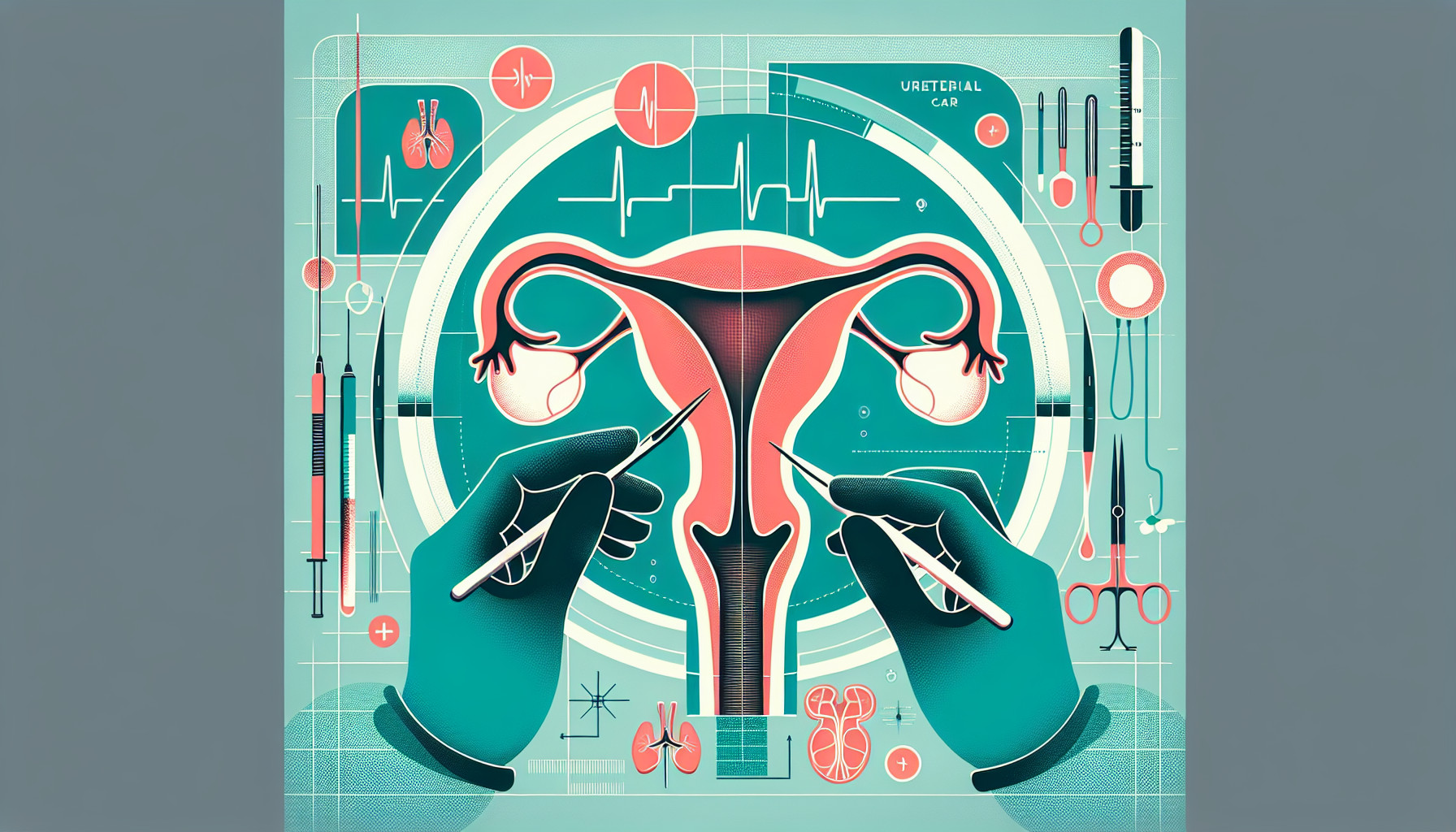Our Summary
This research paper discusses the use of robot-assisted surgery for children who need a ureteral reimplantation, which is a procedure to correct a condition called vesico-ureteral reflux. This is when urine flows backward from the bladder into the kidneys, which can cause kidney damage.
The authors explain why this kind of surgery is needed, how they perform this operation using a robot, and how they deal with different body structures and manage recovery after surgery. They also mention other techniques that have been documented in previous research, and give a short overview of results from past operations using these techniques.
The main focus of the paper is the use of minimally invasive techniques in pediatric surgery, which are becoming increasingly common due to their benefits, such as less pain and quicker recovery times.
FAQs
- What is the main indication for robotic ureteral reimplantation in children?
- Can you describe the post-operative management of a child who has undergone robotic ureteral reimplantation?
- What are some of the outcomes of robotic ureteral reimplantation as described in published series?
Doctor’s Tip
One helpful tip a doctor might give a patient about ureteral reimplantation is to follow post-operative instructions closely, including taking prescribed medications, keeping the surgical area clean, and attending follow-up appointments. It is important to monitor for any signs of infection or complications and to contact your doctor immediately if you experience any concerning symptoms. It is also important to maintain good hydration and follow a healthy diet to aid in recovery.
Suitable For
Patients who are typically recommended for ureteral reimplantation include children with vesico-ureteral reflux. Vesico-ureteral reflux is a condition where urine flows backward from the bladder into the ureters, which can increase the risk of urinary tract infections and kidney damage. Ureteral reimplantation is a surgical procedure that involves repositioning the ureter to prevent the backflow of urine. Other indications for ureteral reimplantation may include ureteral strictures, ureteral obstruction, and other congenital abnormalities of the ureter. Ureteral reimplantation can be performed using minimally invasive techniques, such as robotic surgery, which have been shown to have good outcomes in pediatric patients.
Timeline
Before ureteral reimplantation:
- Patient presents with symptoms of vesico-ureteral reflux such as recurrent urinary tract infections, urinary incontinence, or kidney damage.
- Diagnostic tests are performed to confirm the presence of vesico-ureteral reflux, such as a voiding cystourethrogram or a renal ultrasound.
- The decision is made to proceed with ureteral reimplantation surgery to correct the reflux and prevent further complications.
After ureteral reimplantation:
- Patient undergoes robotic ureteral reimplantation surgery, which involves repositioning the ureter and creating a new connection to the bladder.
- Post-operative care includes monitoring for complications such as infection, bleeding, or obstruction of the ureter.
- Patient may experience pain, discomfort, and urinary symptoms in the immediate post-operative period.
- Follow-up appointments are scheduled to monitor the success of the surgery and address any ongoing issues.
- Over time, the patient should experience improvement in symptoms related to vesico-ureteral reflux and a decreased risk of complications such as urinary tract infections or kidney damage.
What to Ask Your Doctor
- What are the indications for ureteral reimplantation in children with vesico-ureteral reflux?
- Can you explain the surgical technique that will be used for the ureteral reimplantation?
- What are the potential complications of this surgery and how are they managed?
- How long is the recovery period after ureteral reimplantation and what can I expect during the post-operative period?
- Are there any alternative techniques for ureteral reimplantation that I should be aware of?
- What are the expected outcomes of ureteral reimplantation in children with vesico-ureteral reflux?
- How often will follow-up appointments be needed after the surgery?
- What signs or symptoms should I watch for that may indicate a complication after ureteral reimplantation?
- Are there any specific dietary or activity restrictions that I should follow after the surgery?
- Are there any long-term implications or considerations to keep in mind after undergoing ureteral reimplantation for vesico-ureteral reflux?
Reference
Authors: Passoni N, Peters CA. Journal: J Endourol. 2020 May;34(S1):S31-S34. doi: 10.1089/end.2019.0619. Epub 2020 Mar 24. PMID: 32207993
